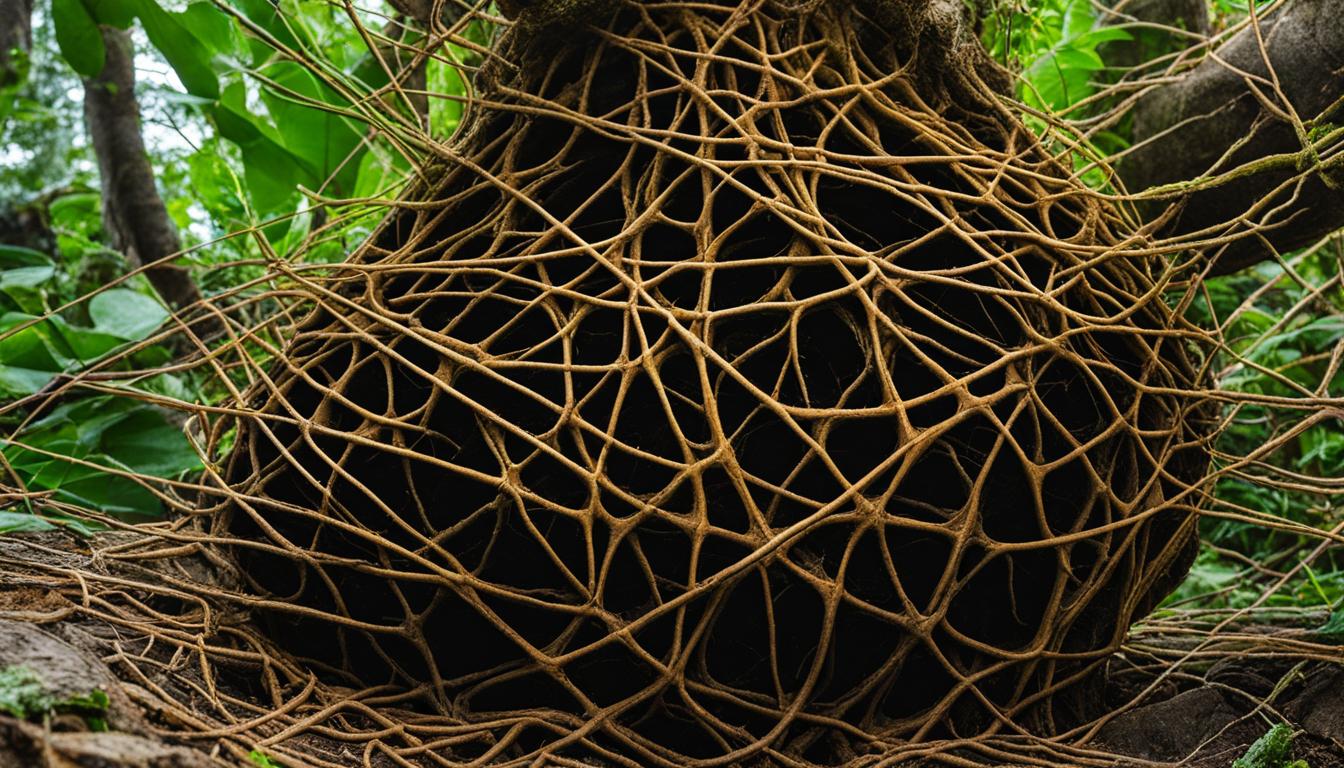
Repotting indoor plants plays a vital role in their care and growth. Knowing when to repot is crucial to ensure the health and well-being of your indoor plants.
In this article, I will guide you through the process of repotting indoor plants, from identifying the signs to selecting the right container and potting mix. Let’s dive in!
Key Takeaways:
- Repot indoor plants when they outgrow their current pots or become pot-bound.
- The best time to repot is during the spring when plants are in their active growth period.
- Signs that indicate it’s time to repot include roots growing through drainage holes, slow growth, and top-heavy plants.
- Choose a container slightly larger than the current one and consider factors like plastic vs. clay pots.
- Use a potting mix specifically designed for indoor plants or create a homemade potting media.
Signs it’s Time to Repot Indoor Plants
If you’re wondering when to repot your indoor plants, there are some telltale signs to look out for. These signs indicate that your plants have outgrown their current pots and need a larger space to thrive.
By recognizing these signs, you can ensure that your plants are given the care they need to continue growing and flourishing.
Signs it’s Time to Repot Indoor Plants
1. Roots growing through drainage holes: If you notice roots protruding from the drainage holes in your plant’s pot, it’s a clear indication that the plant needs more space.
2. Slow or stunted growth: When a plant’s growth slows down or becomes stunted, it may be a sign that the roots are cramped and lacking room to expand.
3. Top-heavy plants that easily tip over: If your plant is top-heavy and frequently falls over, it’s a sign that the roots can no longer support the size and weight of the foliage.
4. Potting mix drying out quickly: If you find that the potting mix dries out quickly, leaving the plant thirsty even after regular watering, it may indicate that the roots have taken up too much space in the pot.
5. Foliage much larger than the current planter: When the foliage of a plant becomes significantly larger than the pot it’s in, it’s a clear sign that the roots are constricted and in need of a larger container.
6. Salt and mineral build-up on the plant or planter: If you notice a white crust or residue on the plant’s leaves or the pot itself, it may be a sign that the plant has been in the same pot for too long, and the minerals from the water have accumulated.
7. Over a year since the last repotting: Lastly, if it has been over a year since you last repotted your plant, it’s generally a good rule of thumb to do so, especially if you notice any of the other signs mentioned above.
If you observe any of these signs, it’s time to repot your indoor plants. Repotting will provide your plants with more space for root growth, fresh potting mix, and the opportunity to continue thriving in their new environment.
Signs it’s Time to Repot Indoor Plants
| Signs | Indication |
|---|---|
| Roots growing through drainage holes | Plant needs more space |
| Slow or stunted growth | Roots are cramped |
| Top-heavy plants that easily tip over | Roots can no longer support foliage |
| Potting mix drying out quickly | Roots have taken up too much space |
| Foliage much larger than the current planter | Roots are constricted |
| Salt and mineral build-up on the plant or planter | Plant has been in the same pot for too long |
| Over a year since the last repotting | Recommended repotting timeframe |
Choosing the Right Container for Repotting Indoor Plants
When repotting indoor plants, one important consideration is choosing the right container. The container you select will have an impact on the plant’s growth and overall health. There are different options available, including plastic and clay pots, as well as decorative containers.
Plastic pots are a popular choice for repotting indoor plants because they are lightweight and easy to move. They also retain moisture well and provide insulation for the roots. But, they may not provide as much drainage as clay pots, which can lead to overwatering if not monitored.
Clay pots, also known as terra-cotta pots, are a traditional option for repotting plants. They are porous and allow for better airflow and drainage, which can help prevent root rot. Yet, they tend to dry out faster and are heavier than plastic pots.
Decorative containers can also be used for repotting indoor plants, as long as they have drainage holes or are placed inside a pot with drainage. These containers add aesthetic appeal and can complement your home decor. Just make sure to prioritize the plant’s needs for proper growth and health.
Comparison of Plastic Pots and Clay Pots for Repotting Indoor Plants
| Criteria | Plastic Pots | Clay Pots |
|---|---|---|
| Weight | Lightweight | Heavier |
| Drainage | Retains moisture well, but may require monitoring to prevent overwatering | Allows for better drainage and airflow, reducing the risk of root rot |
| Moisture Retention | Retains moisture | Dries out faster |
| Insulation | Provides insulation for roots | No insulation properties |
| Aesthetics | Simple and functional | Traditional and natural look |
Selecting the right potting mix for repotting indoor plants
When it comes to repotting indoor plants, choosing the right potting mix is essential for the health and growth of your plants. Garden soil should be avoided as it can lead to disease and pest problems. Instead, opt for a potting mix specifically designed for indoor plants.
These potting mixes are usually composted soil or peat-based mixtures that are fortified with added fertilizers to provide the necessary nutrients for your plants.
Peat-based potting mixes are a popular choice for repotting indoor plants. They are lightweight, which makes them easy to work with, and they provide good drainage.
It’s important to note that peat-based mixes can be more difficult to wet when dry, so regular watering and proper moisture management are necessary.
If you prefer a more DIY approach, you can also create your own potting media for repotting indoor plants. There are various recipes available that include ingredients like compost, vermiculite, perlite, and coconut coir.
Homemade potting media allows you to have more control over the ingredients and customize the mix to suit the specific needs of your plants.
Benefits of using a peat-based potting mix
Using a peat-based potting mix offers several benefits. Firstly, it provides good aeration and drainage, which helps prevent waterlogging and promotes healthy root development.
Secondly, peat-based mixes are lightweight, making them easier to handle and move around. Lastly, these mixes usually contain added fertilizers that provide essential nutrients for your plants, reducing the need for frequent fertilization.
| Benefits of using a peat-based potting mix: |
|---|
| Good aeration and drainage |
| Lightweight and easy to handle |
| Contains added fertilizers for nutrient supply |
Overall, selecting the right potting mix is crucial for successful repotting of indoor plants. Whether you choose a peat-based mix or decide to create your own potting media, it’s important to ensure that the mix is light, airy, and provides adequate drainage for your plants’ roots.
By using the right potting mix, you can provide your indoor plants with the optimal conditions they need to thrive and grow.
How to Repot Indoor Plants Step by Step
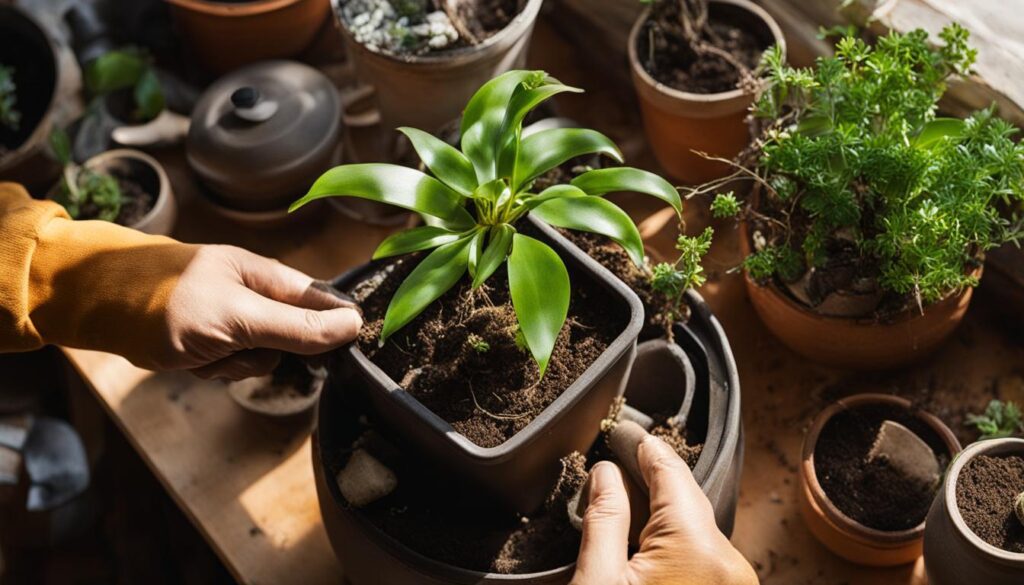
If you’ve determined that it’s time to repot your indoor plants, following a step-by-step process can help ensure a successful transition. Here’s a guide on how to repot indoor plants, providing them with the space and nutrients they need for healthy growth.
Step 1: Choose an appropriate container
Start by selecting a container that is slightly larger than the current one. This will allow for root growth without overwhelming the plant. Consider factors such as material, drainage, and aesthetic appeal.
Plastic pots are lightweight and provide good moisture retention, while clay pots offer better drainage. Decorative containers can be used as long as they have drainage holes or are placed inside a pot with drainage. Before repotting, ensure that the chosen container has adequate drainage holes or add them if necessary.
Step 2: Prepare the plant and new container
Gently remove the plant from its current pot, being careful not to damage the roots or foliage. Loosen the roots by gently teasing them apart, removing any tangled or dead roots.
If the plant is severely root-bound, you may need to make some vertical cuts on the root ball to encourage new growth. Prior to placing the plant in the new container, add a layer of fresh potting mix to the bottom. This will provide a nutrient-rich base for the plant.
Step 3: Repot the plant
Place the plant in the new container, ensuring that it is centered and at the appropriate depth. Fill the remaining space around the roots with fresh potting mix, gently firming it down to eliminate any air pockets.
Avoid compacting the soil too tightly, as this can hinder root growth and water absorption. Leave a small space between the top of the soil and the rim of the container to allow for watering.
Step 4: Water and adjust
After repotting, thoroughly water the plant to help settle the soil and hydrate the roots. Allow any excess water to drain out of the bottom of the container. Place the repotted plant in its desired location, taking into consideration its light and humidity requirements.
Avoid fertilizing the plant immediately after repotting, as it may be sensitive to additional nutrients. Monitor the plant closely in the following weeks, ensuring that it adjusts well to its new container and shows signs of healthy growth.
By following these steps, you can successfully repot your indoor plants and provide them with the space and nutrients they need to thrive.
Remember to choose an appropriate container, prepare the plant and new container, repot with care, and water adequately. Happy repotting!
How often should indoor plants be repotted?
Knowing how often to repot indoor plants is essential for their overall health and growth. The frequency of repotting depends on the specific plant and its growth rate.
While some plants may only require repotting every few years, others may need more frequent repotting due to their fast growth. As a general rule, it is recommended to repot indoor plants every 1-2 years to prevent them from becoming root-bound and to provide them with fresh nutrients and space for root growth.
Regularly checking the condition of the plant’s roots and monitoring for signs of being pot-bound can help determine when it’s time to repot.
Signs that indicate a plant needs repotting include roots growing through the drainage holes, slow or stunted growth, potting mix drying out quickly, and it has been over a year since the last repotting. These signs suggest that the plant needs more room to grow and fresh soil for optimal health.
However, it’s important to consider the specific care guidelines for each type of indoor plant when determining the repotting schedule.
Some plants, like orchids and snake plants, prefer to be slightly root-bound and may not require repotting as frequently. On the other hand, plants with fast growth rates, such as philodendrons or pothos, may need more frequent repotting.
Researching the specific requirements for each plant will help ensure the best timing and method for repotting.
Frequency of repotting indoor plants
| Plant | Recommended Repotting Frequency |
|---|---|
| Snake Plant | Every 2-3 years |
| Peace Lily | Every 1-2 years |
| Philodendron | Every 1-2 years |
| Spider Plant | Every 1-2 years |
| Pothos | Every 1-2 years |
By repotting indoor plants at the appropriate intervals, we can ensure their continued growth and health. Regular repotting allows plants to have enough space for root development and access to fresh nutrients.
It is important to consider each plant’s specific requirements and growth patterns when determining the repotting schedule.
By monitoring the signs of when a plant needs repotting, such as root overcrowding or slow growth, we can provide the necessary care for our indoor plants and support their longevity in our homes.
Choosing the right time to repot specific indoor plant species
Repotting indoor plants is a crucial task that ensures their healthy growth and overall well-being. However, different types of indoor plants have specific requirements when it comes to repotting. It is important to understand these requirements to choose the right time for repotting each plant species.
Some plants, like orchids and snake plants, prefer to be slightly root-bound and may not require repotting as frequently. These plants thrive when their roots are crowded in the pot.
On the other hand, plants with fast growth rates, such as philodendrons and pothos, may need more frequent repotting to provide them with ample space for their expanding root systems.
Researching the specific care guidelines for each type of indoor plant is essential in determining the best time and method for repotting.
Consider factors such as the plant’s growth pattern, the health of its root system, and its overall vigor. By understanding these requirements, you can make an informed decision on when to repot each indoor plant species.
Repotting Requirements for Specific Plant Species
| Plant Species | Repotting Frequency | Preferred Root Condition |
|---|---|---|
| Orchids | Every 1-2 years | Slightly root-bound |
| Snake Plants | Every 2-3 years | Slightly root-bound |
| Philodendrons | Every 1-2 years | Adequate space for root growth |
| Pothos | Every 1-2 years | Adequate space for root growth |
Tips for Successful Repotting of Indoor Plants
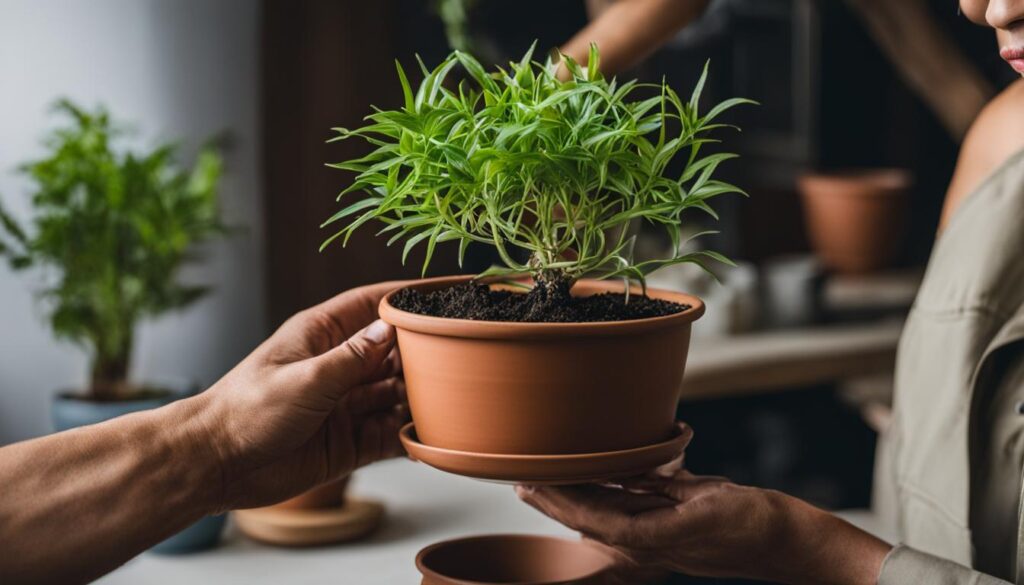
Repotting indoor plants can sometimes be a delicate and intimidating task, but with the right approach, it can be a successful endeavor that promotes the health and growth of your houseplants. Here are some essential tips to keep in mind when repotting your indoor plants:
- Choose the right time: The best time to repot indoor plants is in the spring, during their active growth period. However, if you notice any signs of the plant being pot-bound or outgrowing its current pot, don’t hesitate to repot it regardless of the season.
- Handle with care: When removing the plant from its current pot, be gentle to avoid damaging the roots or foliage. Loosen any tangled roots, and remove any excess potting mix.
- Select the right container and potting mix: Choose a container that is slightly larger than the current one to allow for future growth. Consider the specific needs of your plant, such as drainage requirements and root development. Use a suitable potting mix that provides the necessary nutrients and drainage for optimal plant growth.
- Water and monitor: After repotting, water your plant thoroughly to help it settle into its new environment. Keep an eye on the plant in the following weeks, monitoring for any signs of stress or root issues. Avoid fertilizing the plant immediately after repotting; give it some time to adjust first.
Common Mistakes to Avoid When Repotting Indoor Plants
| Mistake | Consequence |
|---|---|
| Using a pot that is too large | Excess soil can retain too much moisture, leading to root rot |
| Using poor quality potting mix | Inadequate drainage or lack of nutrients can negatively affect plant growth |
| Not loosening the roots before repotting | Tangled roots can continue growing in a circular pattern, leading to root-bound issues |
| Not providing proper aftercare | Failure to water and monitor the plant after repotting can cause stress and hinder growth |
By following these tips and avoiding common mistakes, you can ensure a successful repotting experience for your indoor plants. Remember to always prioritize the specific needs of your plants and provide them with the best possible conditions for healthy growth.
Benefits of Repotting Indoor Plants
Repotting indoor plants offers numerous benefits that contribute to their overall health and longevity. By providing more space for root growth, repotting allows plants to establish a strong and extensive root system.
This enhanced root development leads to improved nutrient absorption, resulting in healthier and more vigorous plants.
In addition to root growth, repotting prevents plants from becoming pot-bound. When roots become crowded, they can wrap around themselves, inhibiting nutrient uptake and water absorption.
By repotting, we break up the root ball, allowing roots to spread out and access the fresh potting mix. This prevents the plant from becoming stressed and enhances its ability to thrive.
Furthermore, repotting provides an opportunity to refresh the potting mix, ensuring that it remains rich in nutrients and well-draining. Over time, potting mix can become compacted, leading to poor drainage and an increased risk of overwatering and root rot.
By repotting, we can replace the old potting mix with a fresh, well-aerated blend that promotes optimal root health and prevents moisture-related issues.
Summary of Benefits
Repotting indoor plants benefits them in the following ways:
- Promotes root growth and establishment of a strong root system
- Prevents plants from becoming pot-bound
- Refreshes the potting mix, ensuring proper drainage and nutrient availability
- Enhances the overall health and vigor of indoor plants
Comparing the Benefits of Repotting
| Benefits | Repotting Indoor Plants | Not Repotting Indoor Plants |
|---|---|---|
| Root Growth | Enhances root growth and establishment of a strong root system | Stunts root growth and inhibits establishment of an extensive root system |
| Pot-Bound Plants | Prevents plants from becoming pot-bound and keeps roots healthy | Leads to pot-bound plants, which can cause stress and hinder growth |
| Potting Mix Quality | Allows for refreshing of potting mix, maintaining proper drainage and nutrient availability | Leads to compacted potting mix, poor drainage, and nutrient deficiencies |
| Overall Plant Health | Promotes healthier and more vigorous indoor plants | Contributes to the decline and potential demise of indoor plants |
Repotting indoor plants is a necessary and beneficial aspect of their care routine. By repotting at the right time, indoor plants can continue to thrive and flourish in the indoor environment.
It is important to pay attention to the signs that indicate the need for repotting, such as root-bound plants or slow growth. These signs should not be ignored, as repotting provides the plant with more space for root growth and fresh nutrients from the new potting mix.
Choosing the right container and potting mix is also crucial for successful repotting. Plastic or clay pots can be used, depending on the plant’s drainage needs, and a quality potting mix specifically designed for indoor plants should be selected.
Following a step-by-step process and handling the plant with care during repotting will help ensure its successful transition.
Regular repotting, every 1-2 years, is recommended to prevent plants from becoming root-bound and to promote healthy growth. This practice contributes to the overall health and longevity of indoor plants, allowing them to thrive in their new containers.
By following these guidelines and paying attention to the specific needs of each plant, indoor plant enthusiasts can enjoy the beauty and benefits of their green companions for years to come.
FAQ
When is the right time to repot indoor plants?
The best time to repot indoor plants is in the spring, during the active growth period. However, it can also be done in the fall, at least three to four weeks before bringing the plant indoors for the winter.
What are the signs it’s time to repot indoor plants?
Signs include roots growing through the drainage holes, slow or stunted growth, top-heavy plants, potting mix drying out quickly, and foliage much larger than the current planter.
How do I choose the right container for repotting indoor plants?
Choose a container slightly larger than the current one, considering factors like plastic pots being lightweight and easy to move, while clay pots provide better drainage.
What potting mix should I use when repotting indoor plants?
Use a potting mix specifically designed for indoor plants, such as a composted soil or peat mixture with added fertilizers. Homemade potting media can also be used.
What is the step-by-step process for repotting indoor plants?
Start by choosing an appropriate container, gently remove the plant from its current pot, loosen the roots, add fresh potting mix to the new container, place the plant on top, and fill the rest with potting mix. Water thoroughly and let it adjust.
How often should indoor plants be repotted?
It depends on the specific plant and its growth rate. As a general rule, repot indoor plants every 1-2 years to promote healthy growth and prevent root-bound situations.
Are there specific requirements for repotting different types of indoor plants?
Yes, some plants prefer to be slightly root-bound, while others may need more frequent repotting. Research the specific care guidelines for each type of indoor plant to determine the best time and method for repotting.
What are some tips for successful repotting of indoor plants?
Handle the plant gently, loosen tangled roots, choose an appropriate potting mix and container, water thoroughly after repotting, and monitor the plant for any signs of stress or root issues.
What are the benefits of repotting indoor plants?
Repotting allows for more root growth, prevents pot-bound roots, provides fresh nutrients, improves drainage, and can rejuvenate struggling plants and promote new growth.
Can you summarize repotting indoor plants?
Repotting indoor plants is necessary when they outgrow their pots or become pot-bound. Signs include root growth through drainage holes, slow growth, and top-heaviness. Choose a slightly larger container, use the appropriate potting mix, and follow a step-by-step process. Repotting every 1-2 years promotes healthy growth. Each plant species may have specific repotting requirements. Successful repotting requires gentle handling and monitoring. Repotting benefits root growth and overall plant health.

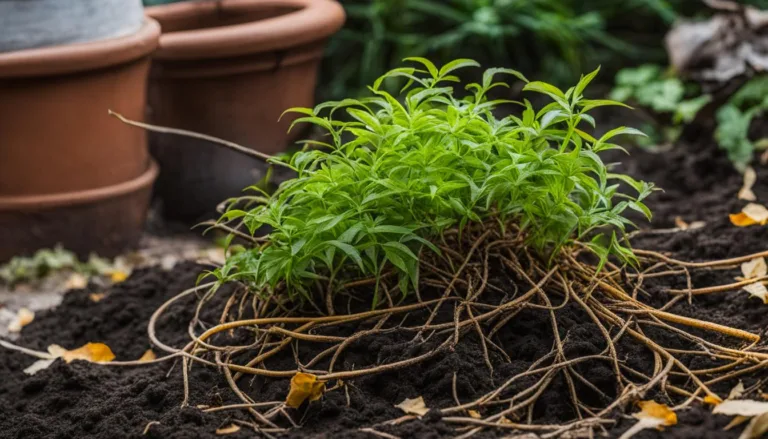
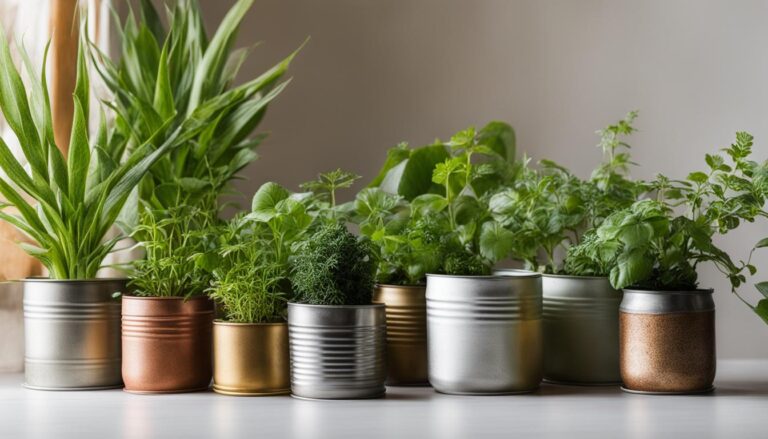
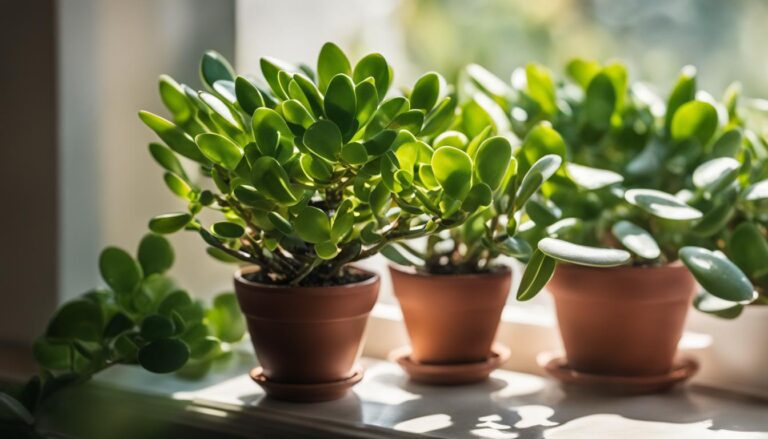
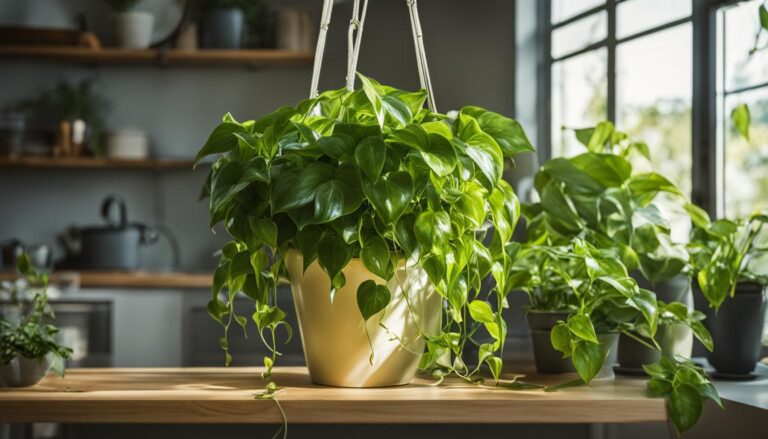
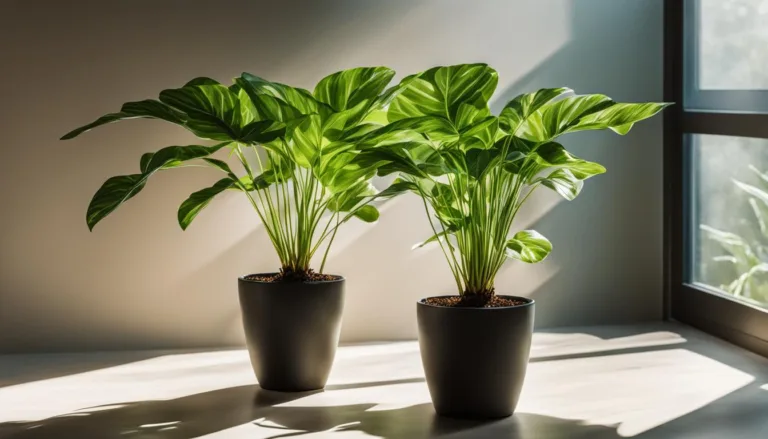
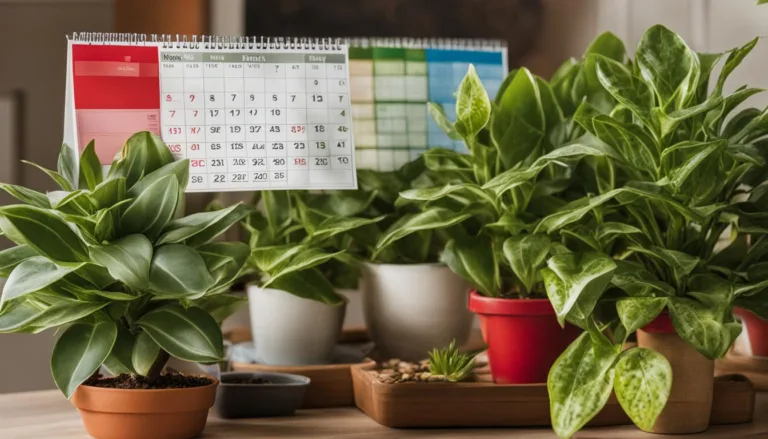
One Comment
Comments are closed.